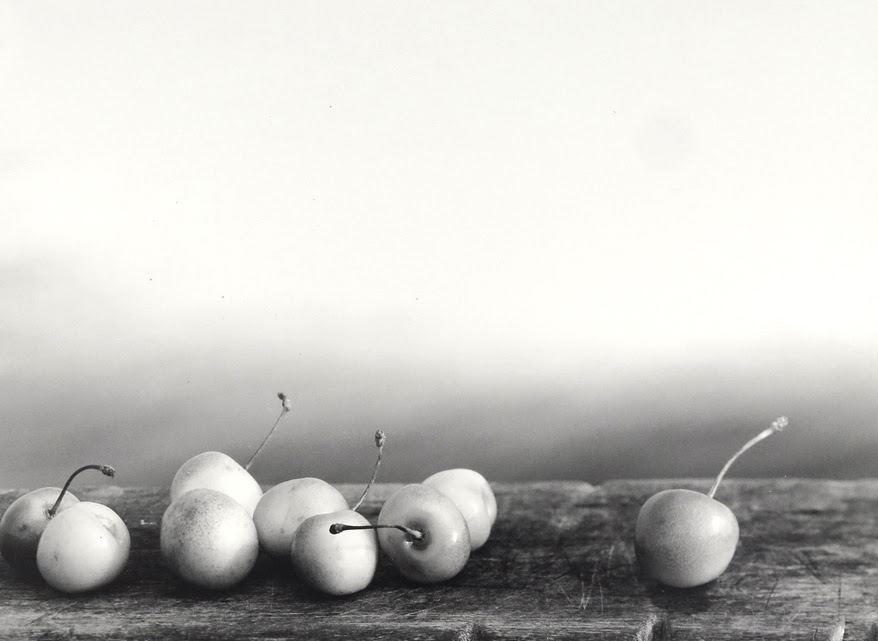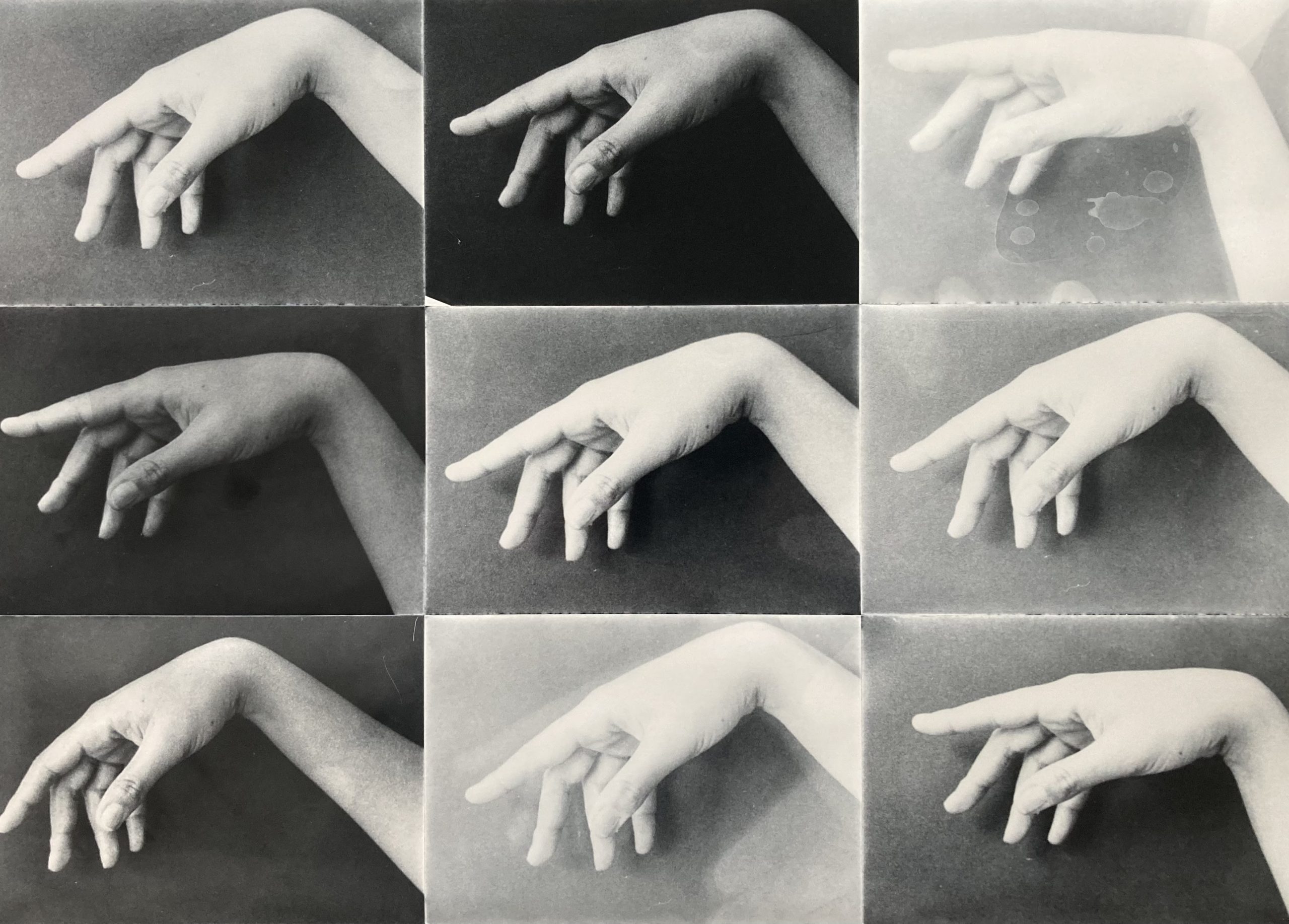In the spring of 2025, in camera presents a selection of works by Alexandra Catiere, a Belarusian artist, and Thomas Vandenberghe, a Flemish Belgian. Two artists with very distinct universes, but who share a passion for bichromia and the great care they take in their prints.
Floral inspiration forms a link between these two artists. Repeated in still lifes, adornments, and decoration, this smiling motif gains depth when expressed in black and white. These now simplified flowers, frozen in the mysterious life of signs, deliver their messages more distinctly: the brevity of our stay on earth, the eternal return of sap, desire, the free gift, formal perfection…
Alexandra Catiere’s flowers sometimes resemble jewelry, blooming on fruit trees or fixed in the hair of young girls. It is a completely different bouquet that she exhibits here: tousled, on the brink of wilting but still holding its beauty, it breathes hope. The image comes from a retirement home, where the artist was doing a photographic internship… Taken in the room, and printed after superimposing several negatives, it was approved on-site by the lady who took care of the daily flower arrangements in this haven. “To please her,” explains Alexandra Catiere, “I colored two prints, one in red and the other in cyan.” In the latter, two intertwined flowers seem to have emerged from a masquerade ball, making wide eyes at the viewer, their stamens and pistils mimicking the pupil and iris.
At the end of the flowers, there are the fruits. For Alexandra Catiere, the love of apples has a taste of childhood: “It was the only fruit available in Belarus.” Very young, she created a series of images inspired by Giorgio Morandi. Under Irving Penn, whom she became an assistant to, she learned to cover them in paint to better capture their essence. The fruit of long hours in the darkroom, a unique print features five white apples and one black in a falsely casual arrangement. As for cherries, they represent the “forbidden fruit” for Alexandra Catiere: “They were very expensive, and their season was short.” Plump, licked, boldly sending their fine stems toward the sky, the white cherries exhibited here were photographed in the room in the United States.
Other images by Alexandra Catiere illustrate, in a Slavic manner, both sad and joyful, a love of life almost pantheistic, where plants and human beings merge with the starry sky. A gothic vision of a nocturnal forest, stripped of its leaves, where the bare branches vainly scratch the darkness. Walkers in Moscow, in a snow-covered park. Produced by superimposing two negatives, the artist skillfully varies their densities, and the figures on scene sometimes seem to fade, as if caught in a snowstorm. The essence of things is best seen from afar, what is hidden is more precious. A naked woman with an invisible face protects her nudity. Another bends against the wind, holding her hat, her hands emerging from a mass of clothing.
Thomas Vandenberghe favors emotional images, often presented in very small formats. He has always photographed flowers: roses, orchids, or simple wildflowers. To those surprised by this obsession, he responds that it is universal: “Who doesn’t like flowers?” Born and living in Ghent, a city of art and artists, this trained printer captures his idols with a small camera, with most of his work done in the darkroom: his pleasure lies in working and reworking his prints, modulating densities, juxtaposing negatives, burning, calligraphing, tearing the proofs to reassemble the fragments in a visual firework. From this playful alchemy emerges a puzzle of life fragments that, according to the artist, are “snapshots of truth.” Remnants of different temporalities, they have been reassorted by memory to bring forth beauty.
Fertile confusions: Thomas Vandenberghe transforms the female body into a still life and photographs flowers as a portraitist. A pleated skirt molding a modest backside evokes a tulip leaning on its stem. A blouse-wearing bust resembles an unopened flower. The new Lady Godiva, a woman buries her chest in the branches of a weeping willow: glued to her face, a fragment of the contact sheet attests to the reality of the photo. Since Richard Feynman, we know that reality is the sum of all possibilities. Vandenberghe’s serial images explore this bushy world where repetition is never the same. Evoking a shadow puppetry manual, a hand varies the same gesture, with slight changes in posture and under different lighting. Nine images of the same mishmash of flowers, photographed up close in a gradient of lighting, seem to reflect the plant’s moods. In another image, they display, iridescent with reflections, an almost aggressive splendor.
Jacques Brunel
March 2025






